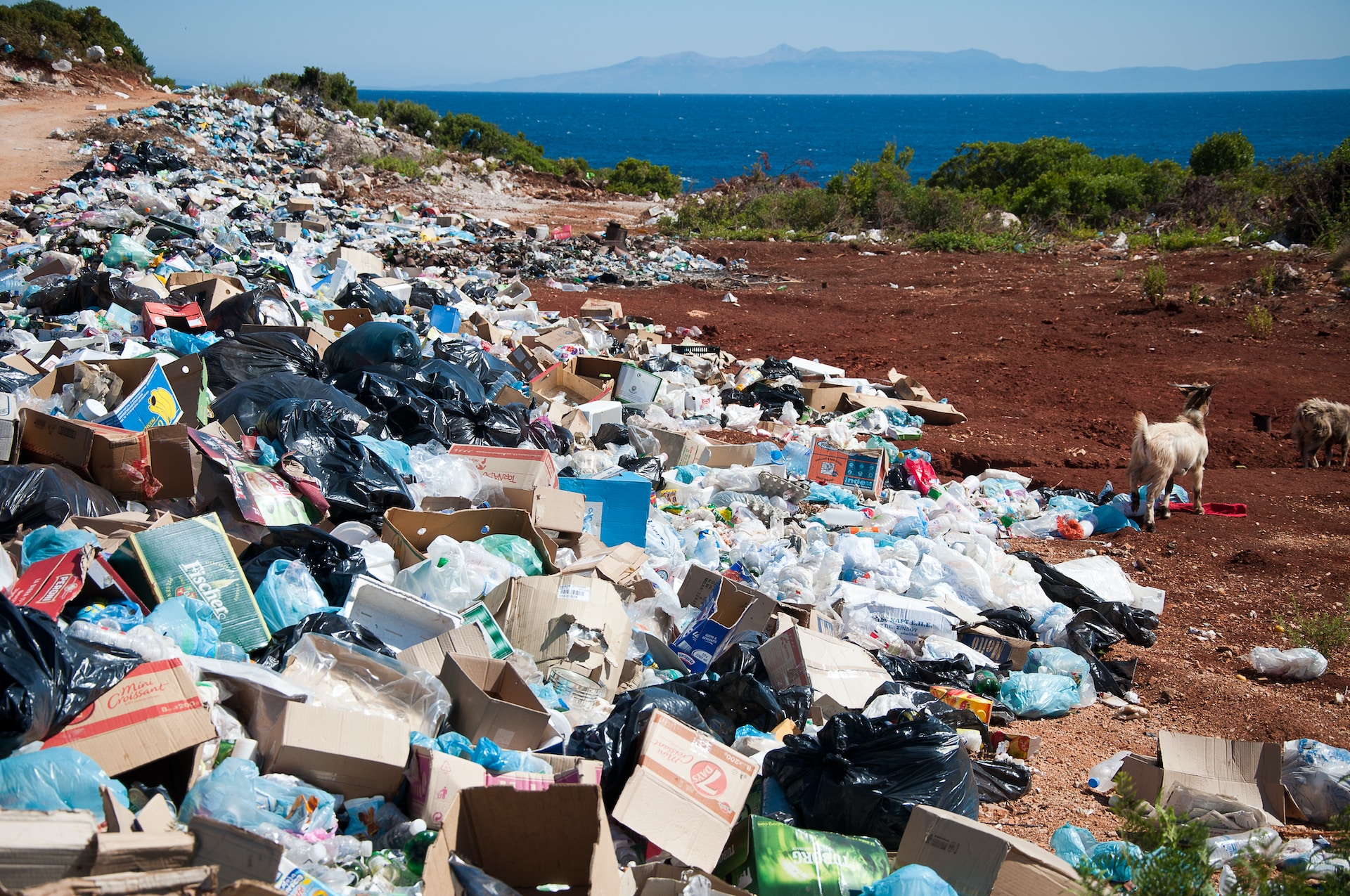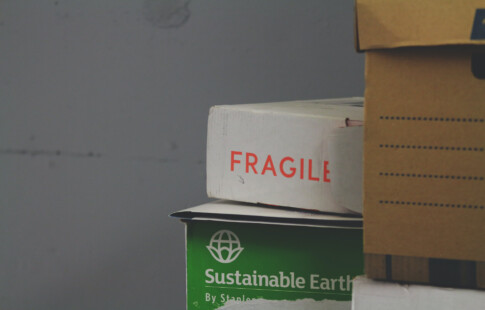
Consumerism and the Environment: Is Shopping Sustainable?
We are reader-supported. When you buy through links on our site, we may earn affiliate commission.
What is the connection between consumerism and the environment? Is shopping really that bad for the planet? It’s easy to see habits like refreshing your closet every year as harmless or fun. However, consumerism has a profound negative impact on the environment. What exactly is that impact? Is there a way to enjoy shopping without contributing to climate change?
Consumerism and the Environment
How are consumerism and the environment connected? First, it’s important to understand exactly what consumerism is. There’s a difference between going shopping for necessary goods and the occasional luxury item now and then, compared to buying cheap new clothes every week.
The latter scenario is an example of consumerism, which refers broadly to lifestyles, trends and mindsets that encourage unnecessary, excessive consumption. Consumerist messages include things like “more is better” and “new is better.” Consumerism is found in everything from individuals’ shopping patterns to advertising and marketing campaigns.
Consumerism and the environment are closely linked. When people buy mass amounts of goods, it leads to more waste, pollution and emissions. For example, someone who throws out dozens of pieces of clothing every year to “refresh” their closet is creating textile waste that ends up in landfills.
The activity required to power consumerist shopping habits also hurts the environment. For example, when online marketplaces have huge sales, it triggers a surge in high-speed shipping. This leads to increased traffic on roads and at sea, surges of activity at warehouses, pollution from packaging waste and spikes in carbon emissions.
It’s important to note that despite these serious side effects, consumerism itself isn’t inherently bad. Robust manufacturing and business opportunities create thousands of jobs and allow plenty of room for new innovations to emerge. When consumerism gets out of control, though, it can do more harm than good.
How Shopping Harms the Planet
The connection between consumerism and the environment essentially comes down to a few key areas: emissions, pollution and material waste.
It’s worth noting that all three of these negative side effects of consumerism have side effects of their own, particularly on wildlife. Emissions, pollution and waste can all cause destruction to sensitive ecosystems and habitats, making it harder for wildlife to survive. This applies to plants and animals on land and in the oceans and waterways.
Carbon Emissions
Carbon emissions are at the forefront of discussions around climate change today. Consumerism is one of the world’s leading sources of emissions, driving carbon-heavy processes like manufacturing and transportation. Research shows at least 45% of GHG emissions are from the production of goods all over the world.
Manufacturing processes for every product on the market create emissions somewhere within the supply chain. This is largely due to the massive amounts of energy required to power manufacturing facilities and transportation. Some manufacturing processes also create emissions themselves, though.
Environmental Pollution
Unfortunately, consumerism drives a significant portion of the world’s pollution. Many manufacturing processes create toxic byproducts that can easily escape into the surrounding environment, particularly waterways. For example, the clothing industry alone is responsible for an estimated 20% of water pollution around the world.
Environmental pollution comes in many forms. Dyes and particulate waste are among the most common types. Pollution doesn’t just impact wildlife, either. It destroys natural water sources, leading to a lack of safe drinking water. This is especially common in developing countries where low-cost, high-pollution manufacturing often takes place.
Material Waste
Arguably the most direct connection between consumerism and the environment is large amounts of material waste. Consumerism can easily motivate people to buy more goods than they actually need or encourage them to replace items that are still in good condition. This is especially common with clothing.
Textile production generates millions of tons of waste each year and very few fabrics ever get recycled. So, many perfectly good pieces of clothing end up in landfills all over the world. The same happens with products like electronics, which are a major contributor to toxic waste.
Additionally, consumerism creates massive amounts of waste from packaging. Each year, millions of Amazon packages are shipped in plastic envelopes. Countless products are sold in non-recyclable packaging materials. E-commerce has significantly increased reliance on packaging, as well, since fewer consumers are buying things like shoes or clothing at brick-and-mortar stores.
Sadly, much of this waste ends up in natural spaces, like the floating islands of trash in our planet’s oceans.
Is It Possible for Shopping to Be Sustainable?
After hearing about all the negative side effects of consumerism on the environment, it’s natural to want to take action. You may be wondering, “can shopping be sustainable?”. There’s good news and bad news on this topic. The good news is that yes, it is possible to buy goods like shoes and clothes from sustainable brands. The bad news is that these brands are still the exception to the rule.
As long as consumerist habits continue to dominate shopping, industries like fast fashion will continue to thrive. The world needs widespread change for shopping to become sustainable. That may sound daunting, but there are steps each of us can take to support more sustainable supply chains.
Shop Sustainably
The first step is to speak with your money. In any capitalist economy, businesses will adapt to go where the money is, meaning they will change their habits in response to consumers’ demands. So, the more people choose to buy from sustainable brands, the more other businesses will start building more environmentally-friendly supply chains, as well.
There are a growing number of resources for finding sustainable brands to shop with. For instance, Good On You has a directory of independently-rated sustainable brands across different price ranges. Many of them are based in the UK or EU, though, and the list sticks to smaller brands.
The Fashion Transparency Index is a more comprehensive annual report that ranks the largest brands in the world and includes data from fashion sustainability research. This report is helpful for seeing how sustainable your favorite big-name brands are.
Shop Less
In addition to buying sustainable products, you can also buy less. Consumerism often encourages people to buy as many goods as possible or to buy the newest or trendiest products. These habits are harmful to the environment and wasteful, leading many people to spend money on low-quality products that won’t last long.
Instead, choose to spend a bit more up front and get higher quality products you will use longer. These goods end up being less expensive in the long run and they reduce waste. If you do need new clothes, you can also go thrift shopping and have fun looking for unique or vintage items. Similarly, if you need a new phone or laptop, consider buying a refurbished model instead of one that’s brand new.
Choose Sustainable Shopping Over Consumerism
Consumerism seems normal since we have all become so used to it. However, there are other ways to shop that create much less harm on the environment. Shopping sustainably requires adopting new habits, like buying fewer items and focusing on quality rather than a low price. You can also use research and independent rankings to see how sustainable your favorite brands are before buying from them.
Share on
Like what you read? Join other Environment.co readers!
Get the latest updates on our planet by subscribing to the Environment.co newsletter!
About the author
Jane Marsh
Starting from an early age, Jane Marsh loved all animals and became a budding environmentalist. Now, Jane works as the Editor-in-Chief of Environment.co where she covers topics related to climate policy, renewable energy, the food industry, and more.





